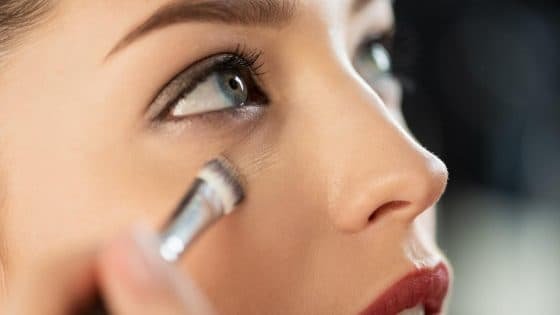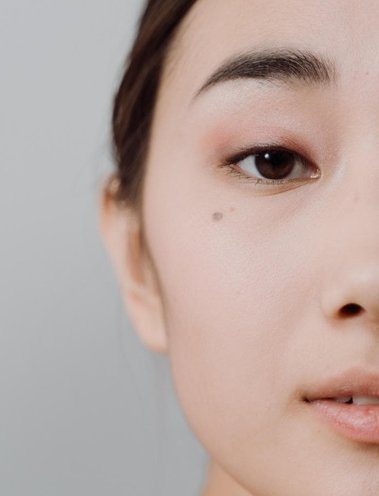How To Apply Concealer For Beginners

It’s a product that many of us rely upon to cover up the effects of a late night or disguise a breakout – but learning how to apply concealer like a pro is another matter.
However, before learning how to use concealer properly, you need to understand the different types that are out there and their specific purposes. And once you’ve picked the right concealer for you? It’s time to wield it with finesse with the help of our top expert tips…

Where to use concealer and what it’s for
Common places on the face to apply concealer are:
- Under the eyes
- Around the eyebrow
- Below the cheekbones
- On any blemishes
- Around the nose
Do you put concealer on before or after foundation?
So, do you put concealer or foundation on first? The short answer: apply concealer after foundation.
“It’s kind of like skincare – you always apply the thickest consistency last,” says McHale. “You wouldn’t put cream on before serum, right? And concealer tends to be denser than foundation. Also, it’s got more coverage.”
The idea is to put a thin layer of
To ensure you don’t forget, McHale has a simple phrase: “Primer, foundation, concealer, powder – that’s the order to remember. There’s no other way. I always say there’s no rules in make-up, but this is a rule!”
Can you use concealer as foundation?
Using a high-coverage concealer all over your face is bound to look unnatural. If you’re in a pinch and have run out of foundation, you can mix a drop of concealer with your
Also, if you have relatively even-toned skin, you may not need to always wear foundation. Just use concealer on the small areas that need a bit of coverage (make sure the shade perfectly matches your skin).
In all other cases, a thin layer of foundation pre-concealer will always create the most even, natural-looking effect.
How to apply concealer
When it comes to concealer, beginners ask many questions. Where do you put concealer? What does concealer do? What’s the best way to apply concealer? Does concealer go before foundation?
Let’s simplify things. To get started with your application, there are a number of factors to consider. Firstly, the texture and level of coverage a concealer offers – which very much depends on the formula that you choose. Luckily, though, there is a general rule you can follow. Creamy, light-reflective concealers are great to brighten up the under-eye area; denser, thicker textures are useful when you’re trying to cover up a spot, and runny liquids are great to get a thin coat of coverage over a larger area.
How you apply it depends on what you’re trying to conceal. But it’s important to remember that concealer can only cover up various forms of discolouration, not textural concerns. For example, it can hide under eye shadows, redness around the nose, acne scars or even the redness on a blemish. But it cannot hide bumpy skin, dry patches or the inflammation around a spot.
Application technique
If you have a blemish that is a bright red shade, the best way to apply concealer is to use a green-toned colour corrector on it first to cancel out the redness. Next, reach for concealer.
“Use a concealer that’s the same colour as the rest of your face,” says McHale. “It needs to be a close match to the rest of your skin. Apply it to the centre of the spot and blend outwards.”
She adds: “You want to restrict the concealer as close to the spot as possible. So, if you’ve got a pinprick spot, don’t try to draw a ring of Saturn around it – there’s no need. Just get right on it with a small brush and very gently pat it in.”
For any other scars or pigmentation, use a small brush to lightly dab concealer on the skin. You can use your finger to press the colour in and wipe away brush strokes. You can use a high-coverage concealer like
How to cover a spot
“Concealing a spot is not an easy job,” says Charlotte McHale, Clarins Training Manager. “With the rise of HD television, you may have noticed that even celebrities have spots that are visible on TV. They may be covered, but they’re still raised.”
She adds: “You can do a lot to make the spot less obvious, but there’s nothing you can do to alter its texture. So, the first thing I would say is: give yourself a break.”
Once you’ve accepted that the spot will heal in its own time, you can use some concealer to minimise the redness around it.
(To avoid the spread of bacteria, never dab a concealer stick or applicator directly onto a spot – deposit some of the pigment onto a brush or clean hands and wash immediately afterwards.)
How to conceal redness around the nose
Wondering how to put on concealer to banish redness around the nose? Try tapping on a lightly textured product with your ring finger (the lightest finger to use) in thin layers, building it up until the blemish has disappeared. Always make sure that the area is well moisturised, as the skin around the nose can tend to become quite dry, particularly during the winter months.
How to use concealer for under eyes areas
We all need a little help after we’ve been burning the midnight oil to cover those dark circles that are tell-tale signs of fatigue.
Hydrate the areas
First, you need to ensure that the under-eye area is well hydrated. Use a lightweight eye cream for this. We like the
Choosing the right colour and formula
If you have particularly dark under-eyes, prepping with a colour corrector can help balance out the discolouration. You only need the tiniest bit. Choose a yellow and orange tone to help counterbalance purple and blue tones under the eyes. Go for a pink or peach one if you have fair skin. It is better if you use a primer with colour to even out the skin tone beforehand.
Apply the concealer
Next, reach for your concealer. Remember to use a minimal amount of product, applying it only to the areas that need it. “Don’t over-conceal,” warns McHale. “Only cover the dark areas, which are usually the very inner corners of the eyes, and the first third or first half of the under-eye area. The outer half typically never needs concealing unless you’ve got some redness or pigmentation in the outer corners of the eyes. If you’ve got any discolouration on the eyelids, you can apply some concealer across the lids as well.”
To apply it, you could use your fingers or a small brush.
In terms of shade selection, choose one that matches the skin perfectly. “Don’t go too light and never darker,” McHale advises.
Try: The
How to stop concealer from creasing
Usually, concealer creases if you use too much. It’s a highly pigmented product, so you usually need less than you think you would. Also, it’s always a good idea to build coverage in thin layers rather than applying loads from the start.
You also must be especially careful if you’re applying concealer on a part of your face that naturally creases – this could be your forehead, under your eyes, the corners of your eyes and the mouth. “In those areas, keep make-up as minimal as possible. Because that kind of creasing can’t be helped,” says McHale.
Making sure your skin is well-hydrated will also help. If the skin is dry, it will take the moisture from the make-up and leave the dry product on the surface which is more likely to crease.
Lastly, be careful not to over-powder. Powder lightly all over for a long-lasting effect. And if you’ve got dry skin, you may only need to powder very specific areas like just the eyelids or the centre of the face.
Clarins
Top tips to apply concealer flawlessly
Honing in on the expert knowledge we now have, here are some quick-fire tips to always keep in mind when applying your concealer in future:
- Create a smooth canvas – make sure that skin is properly cleaned, prepped and hydrated before applying your concealer. After hydrating serum and
SPF , you can use a primer with colour to even out your complexion. - Stick to the spot – don’t over-conceal around a spot, just focus on dabbing the exact area where the blemish is. If your concealer has a wand applicator, never apply it directly to the spot, as this can cause the spread of bacteria.
- Set your concealer in place – add a light dusting of powder over your concealer once you are finished.
- Plan ahead – make sure to consider where to put concealer on your face before application to minimise the risk of overdoing it.
- Concealer under or over foundation – remember the rule: you should always use the thicker textures first before following up with lighter textures on top. Therefore, concealer should be applied on top of your foundation.
- Don’t go overboard – make sure not to use too much concealer, as this can cause it to crease.



